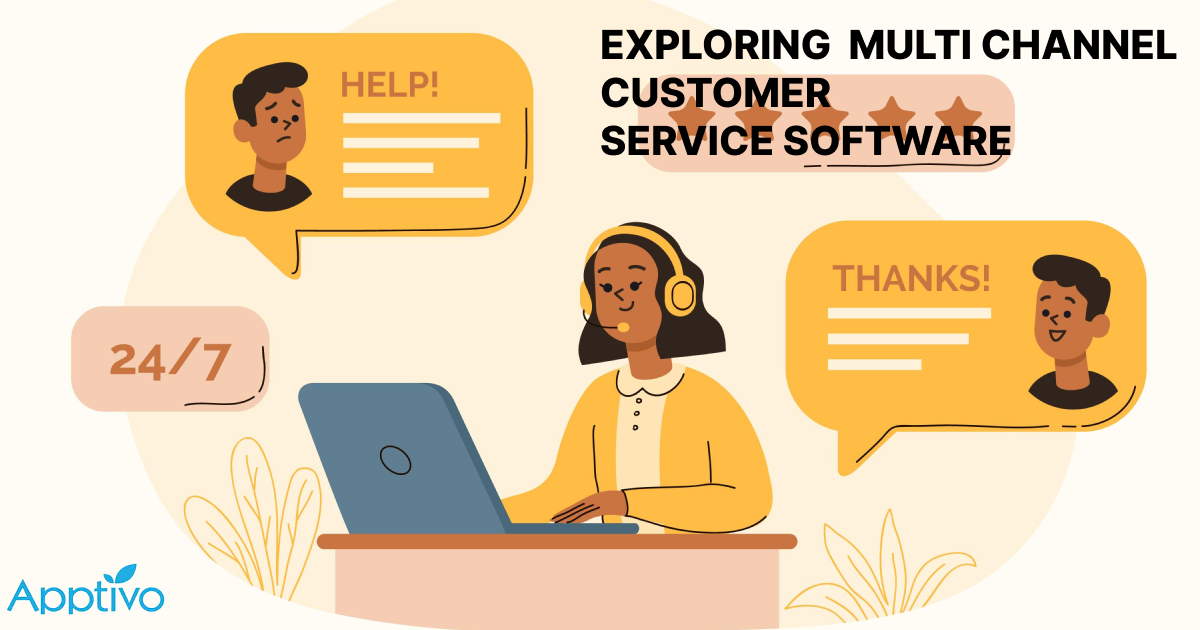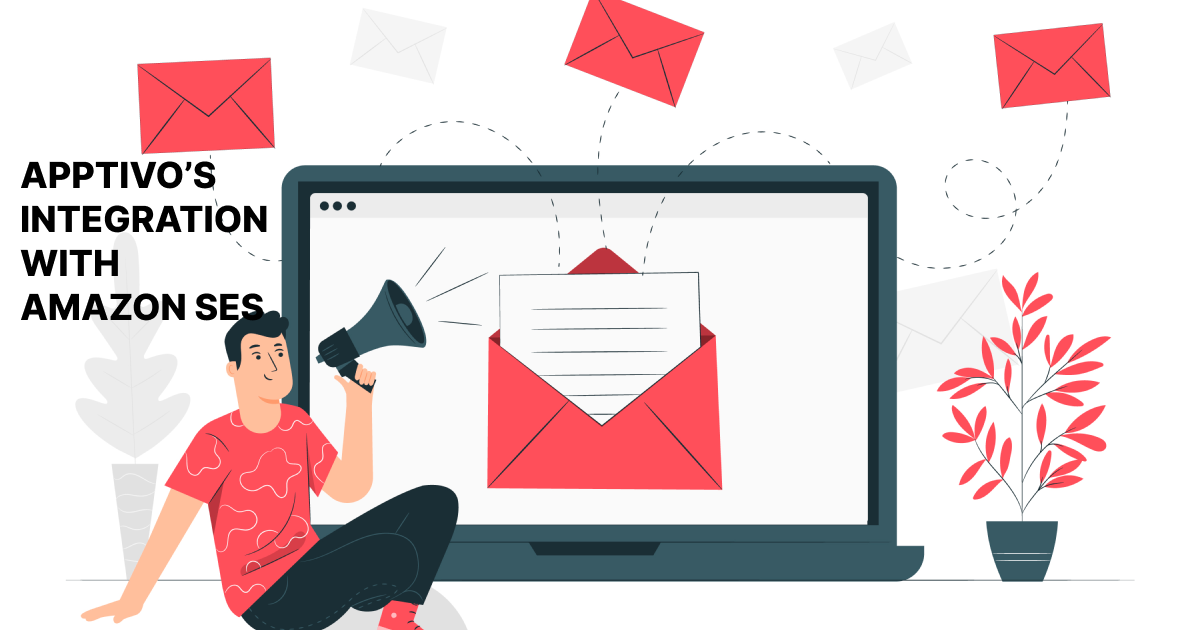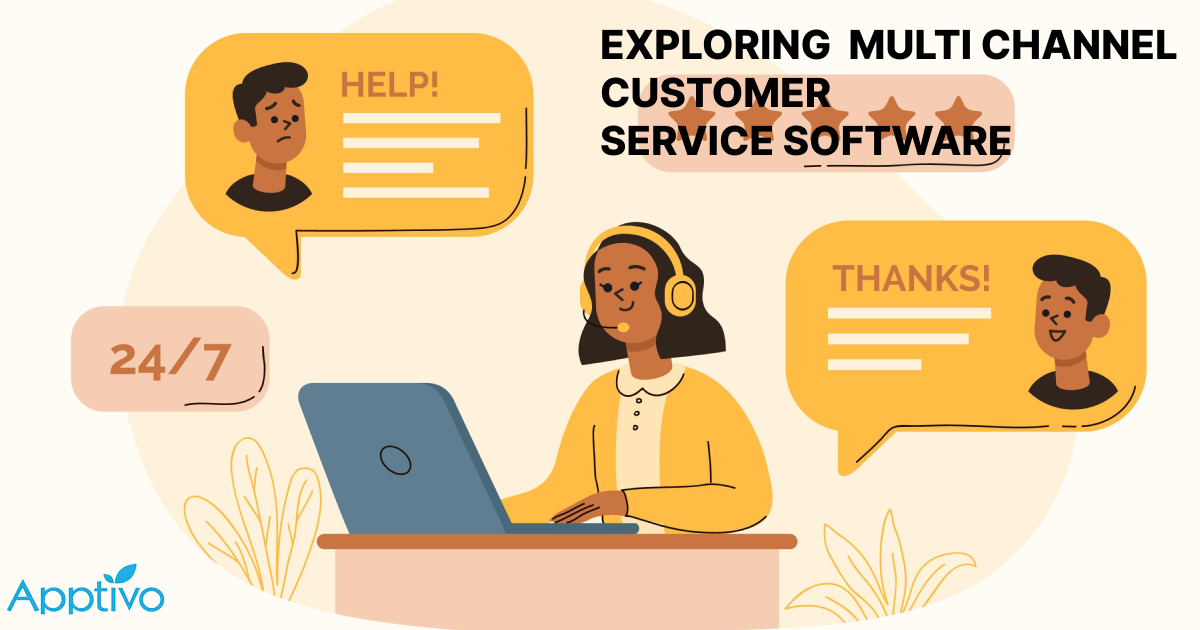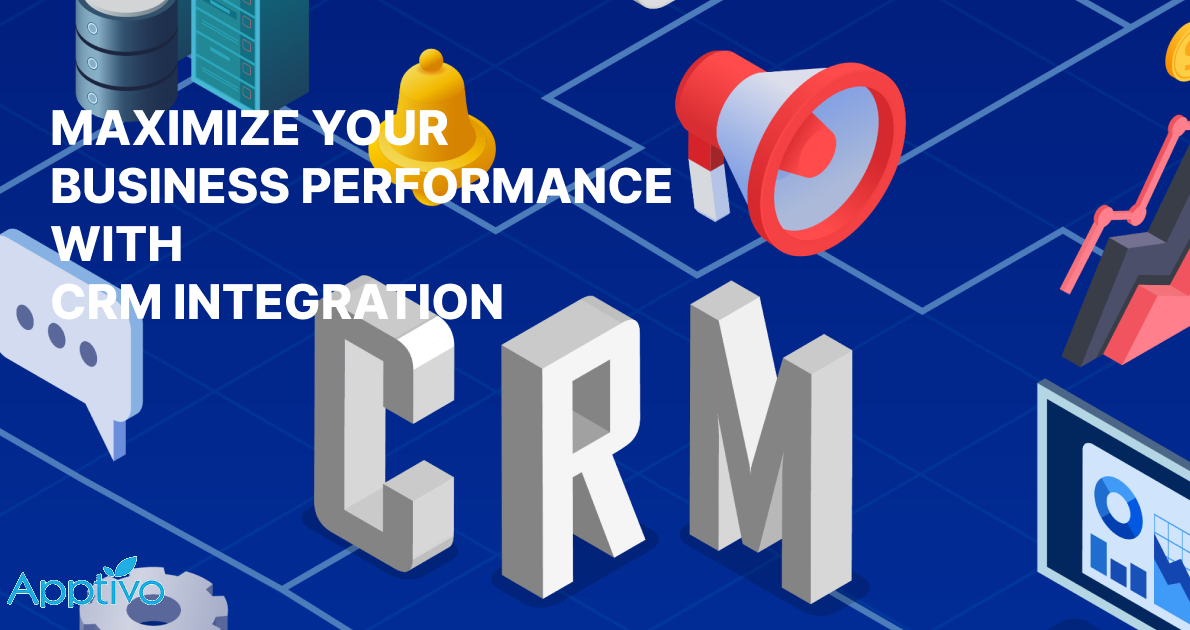 |
1.What is customer service software?
2.Customer service software Vs Customer relationship management
3. Touchpoints & Modes of customer service
4.Important components of customer service software
5.The top 5 must-have customer support tools that boost your business
6. The top features of customer support chat software
7. What to Look for in a customer support software?
8. Which is the best customer support platform for your business?
As a business leader, you understand the importance of providing seamless customer support across multiple channels. Customers today expect to connect with companies through the channel of their choice, whether that’s chat, email, phone, or social media. Multi-channel customer support software enables your business to provide integrated support across various platforms with a single solution.
However, with so many options on the market, finding the right multi-channel customer support software for your unique needs can be challenging. This guide will explore the key features to consider, how the software benefits both customers and support teams, and provide an overview of some of the leading solutions currently available to help you make an informed choice for your business.
With the right multi-channel customer support software in place, you’ll be equipped to deliver the fast, convenient experience your customers have come to expect.
What is customer service software?
Customer service software allows companies to manage various customer touchpoints and interactions across different communication channels. It helps streamline the customer service process by providing tools for managing tickets, knowledge bases, live chats, phone calls, and more.
The main goals of customer service software are to improve customer satisfaction, maximize efficiency, and gain business insights. It offers a centralized platform for managing customer data, communication history, and service metrics. Customer service representatives can quickly access customer information to provide fast, personalized service.
With customer service software, companies can track key performance indicators like average response time, customer satisfaction scores, and agent productivity. Analytics and reporting features provide data to optimize the customer experience and make better business decisions.
By enabling seamless communication across channels, customer service software creates a consistent experience for customers and a streamlined workflow for agents and support teams. For companies, this means higher customer retention, increased brand loyalty, and a competitive advantage.
Customer service software Vs Customer relationship management
Customer service software and customer relationship management (CRM) software, while related, serve different purposes. To determine which solution is right for your support needs, consider the following factors:
Functionality
Customer service software is designed specifically for managing customer support interactions across channels. It typically offers ticketing, knowledge management, reporting and analytics features geared toward streamlining the support experience.
In contrast, CRM software has a broad focus on managing the entire customer lifecycle. While CRM platforms may offer some customer service functionality, their primary aim is sales management, marketing automation and customer data analysis. For companies seeking a dedicated customer support solution, customer service software is likely the better choice.
Integration
If you have a CRM in place, you’ll want a customer service solution that integrates seamlessly with your existing platform. Some customer service tools offer turnkey integrations with major CRM software like Apptivo, Salesforce, Microsoft Dynamics and Oracle CX Cloud. For custom or niche CRM systems, look for a customer service solution with an open API that enables custom integrations.
Scalability
Consider how well each solution can scale to meet your company’s growth. Multi-channel customer service software is designed to handle high-volume interactions across digital and voice channels. It offers advanced routing, queuing and distribution features to ensure optimal staffing levels and quick resolution times even during periods of peak demand.
For rapidly growing companies, scalability is a key factor in choosing a future-proofed customer support solution. Evaluate how well CRM or customer service software can scale to match increases in customer base, interactions and support team size over time.
Touchpoints & Modes of customer service:
Customer service has different touchpoints and modes to cater to diverse needs and preferences.
Touchpoints:
1.Digital Channels:
Virtual Assistance: AI-driven assistance through chatbots or virtual agents.
Secure Messaging: Encrypted messaging platforms for secure communication.
SMS and Messaging Apps: Text messaging platforms for quick interactions.
Live Chat: Real-time chat support on websites or apps.
Co-browsing: Simultaneous browsing with customers for assistance.
Social Media: Platforms like Twitter or Facebook for customer inquiries.
Email: Traditional email communication for problem resolution.
In-App Support: Assistance within mobile or web applications.
2.Brick-and-Mortar Channels:
Retail Stores: In-person assistance at physical retail locations.
Branch Offices: Face-to-face support at company branches.
Field Offices: Assistance provided in the field or at customer locations.
Onsite: Support delivered directly at the customer’s location.
Modes:
1. Self-Service:
Website: Customers find solutions independently through the company’s website.
In-App: Self-help options integrated within mobile or web applications.
IVR (Interactive Voice Response): Phone-based self-service through automated menus.
2. Human-Assisted Service:
Contact Center: Assistance provided by human agents over phone or other channels.
Branch Office: In-person support at physical locations.
Retail: Customer service within retail establishments.
3. Multimodal:
Cobrowsing: Simultaneous browsing with customers, often combined with a call or chat.
Concurrent Phone Call or Chat: Multiple communication channels used simultaneously for enhanced support.
In customer service, the goal is to provide a seamless and efficient experience across these touchpoints and modes, allowing customers to choose the method that suits them best while ensuring a consistent and high-quality service experience.
Important components of customer service software
When evaluating customer service software options, several key components should be considered:
- Ticketing system: A ticketing system allows customers to report issues and companies to track, prioritize and resolve them. An effective ticketing system provides ticket templates, automated ticket routing, and the ability to escalate tickets.
- Knowledge base: A centralized knowledge base contains information to help customers self-serve and assist agents in providing quick, consistent responses. The knowledge base should be easily searchable and contain frequently asked questions, how-to guides, and other relevant content.
- Live chat: Live chat allows customers to communicate directly with agents in real-time via instant messaging. Live chat should support file sharing, agent collaboration, and proactive chat invitations.
- Reporting and analytics: Robust reporting and analytics provide insights into key performance indicators like average handle time, customer satisfaction, and agent productivity. Reports should be customizable and provide actionable insights to improve processes.
- Mobile capabilities: With increasing mobile usage, customer service software should have a responsive interface or dedicated mobile apps to support agents and self-service for customers. Mobile access allows support anywhere, anytime.
- Integrations: Customer service software should integrate with other systems like ecommerce platforms, and billing software. Integrations facilitate a seamless experience and single view of the customer across systems.
- Security: Customer service software should have robust security to protect customer data and communications. Options like two-factor authentication, IP whitelisting, and audit logs help ensure a secure environment.
- Scalability: As a business grows, customer service software needs to scale efficiently. Options that offer flexible or unlimited plans for the number of agents, customers, and features allow for growth without frequent upgrades to more expensive plans.
By evaluating how well options meet these key components, you can determine the customer service software that will best suit your business needs. Focusing on components that match your priorities will lead to higher ROI and a better experience for both customers and agents.
The top 5 must-have customer support tools that boost your business
To provide exceptional customer support, the right tools are essential. The top five must-have customer support tools that boost your business include:
Help Desk Software
Help desk software centralizes customer support operations. It provides a shared inbox for support tickets, knowledge base, and reporting. Popular options like Zendesk and Freshdesk offer robust functionality at affordable price points.
Live Chat
Live chat allows customers to connect with support agents in real time via chat windows on your website. It provides faster resolution and a better customer experience. Many solutions like Intercom and Drift integrate with help desk software and marketing automation platforms.
Phone Support
While chat and email are efficient, some complex support issues are better handled over the phone. Look for a cloud-based phone system with routing, reporting, and integration capabilities. RingCentral and Nextiva are leading business VoIP providers with strong customer support features.
Customer Feedback
Customer feedback tools like SurveyMonkey and Qualtrics help you gather actionable insights from customers about their experience with your support. Use feedback to identify areas of improvement and shape your customer support strategy.
Knowledge Base
A knowledge base organizes support content in a searchable database. It allows customers to self-serve, reducing repeat complaints. Look for knowledge base software with content creation, management, and personalization features to scale your knowledge base as your business grows.
With the right tools in place, you can deliver amazing customer support experiences. Evaluate your needs, budget, and existing software to determine the best combination of tools for your business. Continually revisit available options as new solutions emerge to optimize your customer support operations.
The top features of customer support chat software
Customer support chat software allows your team to communicate with customers in real time through messaging on your website or mobile app. The top features of customer support chat software include:
Automated routing
Automated routing directs customer inquiries to the appropriate support agent based on the customer’s issue and agent availability. This reduces wait times and ensures each customer is connected to an agent capable of resolving their specific concern.
Knowledge base integration
A knowledge base containing frequently asked questions, solutions, and other information can be directly integrated into the chat interface. This allows agents to quickly provide customers with answers to common questions, improving response times and the customer experience. Agents can also build the knowledge base by saving information from conversations to be used for future inquiries.
Customizable interface
The chat window and other interface elements are fully customizable to match your brand. You can modify colors, fonts, images, and the placement of the chat window on your site. A consistent, professional design helps provide customers with a seamless experience across channels.
Agent collaboration tools
Features like agent status indicators, file sharing, and private agent-to-agent chat empower your support team to work together efficiently. Agents can get input from more experienced colleagues on complex issues, share relevant customer information, and keep each other updated on their availability and workload.
Reporting and analytics
Robust reporting provides data on chat volume, wait times, agent performance, and more. Analytics like predictive analytics offer insight into areas of improvement and help you optimize support operations. Monitoring features like live visitor tracking also help ensure high-quality service.
In summary, customer support chat software with features such as automated routing, knowledge base integration, a customizable interface, agent collaboration tools, and reporting/analytics will provide your business with an effective platform for real-time customer service and support.
What to Look for in a customer support software?
- Determine if the software comes with a comprehensive set of features out of the box or if it necessitates extensive programming and customization for advanced functionality.
- Assess whether the software functions as a standalone point product or integrates seamlessly as part of an unsiloed omnichannel solution.
- Verify if the software addresses all stages of the customer engagement process—connect, solve, and optimize—with a broad and deep range of built-in capabilities.
- Evaluate the software’s ability to deliver prompt value, ensuring efficiency in implementation and tangible benefits soon after deployment.
- Check if the vendor can provide evidence of successful implementations at scale, demonstrating their capability to handle large-scale operations.
- Determine whether the vendor can bring industry best practices to the deployment based on their experience in the field.
- Explore whether the software offers a risk-free method for piloting, allowing free-of-charge testing in a production setting before full adoption.
- Ensure that the software meets security standards and compliance requirements, including but not limited to PCI, NIST SP 800-53, HIPAA, HITRUST, and FedRAMP.
Which is the best customer support platform for your business?
To determine the optimal customer support software for your business, evaluate your company’s specific needs and priorities. Some options to consider include:
Live chat: For real-time customer communication, live chat software like Chatwoot or Crisp may be ideal. These tools allow customers to connect directly with support agents via chat on your website or mobile app.
Help desk: If ticket management and email support are priorities, help desk software such as Zendesk or Freshdesk could be good choices. These platforms provide tools for managing support tickets, automating responses, and streamlining email communication.
Call center: For phone support, call center software such as Aircall or Nextiva may be the best solution. These systems offer features like call routing, hold music, call recording, and interactive voice response menus.
Omnichannel: For comprehensive support across channels, omnichannel software such as Zendesk or Freshworks could be optimal. These tools provide integrated live chat, help desk, call center, and social media management capabilities in a single platform.
When evaluating your options, consider factors such as your budget, the types of support you need to provide, essential features, integrations, customization, scalability, and user experience.
The right customer support software for your business will ultimately depend on how well any given solution meets your company’s needs and priorities. With an array of options available, take time to determine what is most important for your support workflows and customer experience.
Types of Customer Service Software
There are several categories of customer service software available to support your business. Some options may handle one area of customer service, while others provide an integrated solution across channels. The most common types are:
Ticket management systems allow companies to log, track, and resolve customer queries and issues. Tickets can be created through multiple channels like live chat, email, social media, and more. They provide a centralized place to manage the entire lifecycle of a customer request.
Knowledge management solutions give agents a database of articles and information to quickly resolve common questions. They reduce handle times and improve customer satisfaction by providing fast, consistent responses.
Customer service chatbots can handle initial interactions on websites or messaging apps. They use artificial intelligence to understand questions and provide answers or route chats to human agents as needed. Chatbots offer 24/7 service and reduce wait times.
Call center software integrates telephonic communications with other support channels. Features may include interactive voice response menus, call routing, and call recording for quality monitoring and training purposes.
Customer feedback tools gather insights from surveys, reviews, and social media. They analyze trends in customer sentiment to identify areas of improvement and maintain high satisfaction levels.
The range of customer service software available means that companies can choose tools tailored to their needs and budget. An integrated suite may handle all areas, while separate tools can be combined to provide a comprehensive customer experience. The optimal solution depends on your business requirements, customer base, and support model.
How do you choose your customer service software?
To choose the right customer service software for your business, several factors should be considered:
Needs Assessment
First, determine your key customer support needs and priorities. Do you require a help desk ticketing system, live chat, social media integration or a knowledge base? Identifying your must-have features will help narrow down your options. Some solutions offer an all-in-one suite, while others provide standalone tools that can be integrated.
Scalability
Consider how the software can scale with the growth of your customer base and support team. Look for a solution built to handle increasing volumes of tickets, chats and customers as your business expands. Cloud-based software is ideal for scalability.
Ease of Use
The software should be intuitive and easy to learn for both your support team and your customers. An overly complex system will reduce productivity and frustrate users. Look for a simple, streamlined interface with built-in help functions.
Analytics and Reporting
Robust analytics and reporting are essential for improving your customer service. Look for a solution that provides data on key performance indicators like first response time, resolution time, customer satisfaction, ticket volume, and more. Analytics help identify areas for improvement and optimization.
Integrations
Consider what other tools like live chat, email, social media, ecommerce platforms or CRMs you currently use or may use in the future. Look for a customer service solution that offers pre-built integrations with the tools you need or has an open API for custom integrations. Seamless integrations enhance productivity and the customer experience.
Cost
Compare the costs of different solutions based on the features and capabilities you need. Some options charge per agent or user, while others charge per feature. Make sure any solution fits your budget and will provide a good return on investment through improved customer service and support efficiency.
Final Thoughts
Customer support is evolving rapidly with the rise of new communication channels and technologies. As a business, you need to keep up with these trends to continue providing the best experience for your customers. Implementing a multi-channel customer support solution is the key to streamlining your support operations and offering customers convenience as they engage with your brand across various platforms.
With the right tools and strategies in place, you can transform your customer service into a competitive advantage and build loyalty through personalized, seamless interactions at every touchpoint. The journey to get there may require an investment of time and resources, but the rewards of increased efficiency, reduced costs, and improved customer satisfaction will make it worthwhile. Start evaluating your options today!
Latest Blogs

Apptivo's Integration with Amazon SES for Outgoing Email Server
Amazon Simple Email Service (SES) is an email platform that provides an easy, cost-effective way to send and receive email using your email addresses and domains. Apptivo has migrated its email service to Amazon SES (Simple Email Service) to enhance the performance and reliability of our email services
Read more →
EXPLORING MULTI CHANNEL CUSTOMER SUPPORT SOFTWARE
1.What is customer service software? 2
Read more →
Maximize your business performance with seamless CRM Integration
1.What is CRM Integration? 2
Read more →
